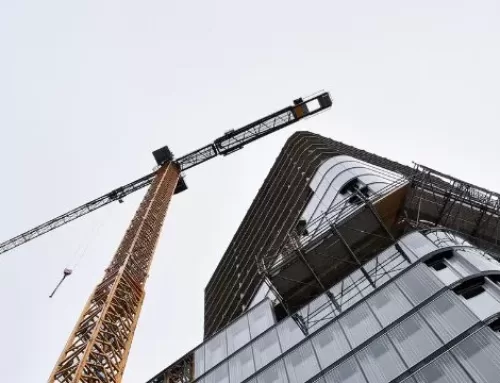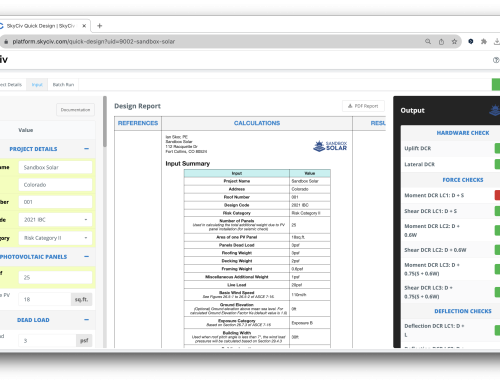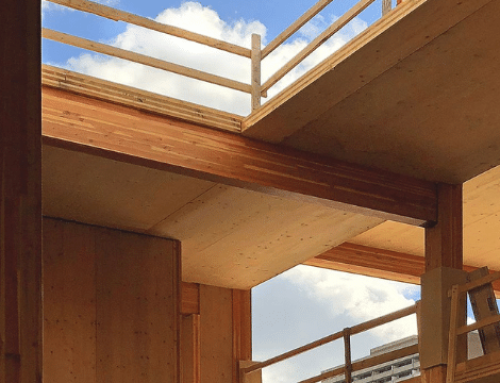In this article, we will be discussing embodied carbon, what it is, and the structural engineer's role in it. Content from this article comes in part from the SE 2050 [Challenge], which stands for the "Structural Engineers 2050 Commitment Program" endorsed by the Structural Engineering Institute as a part of the American Society of Civil Engineers (ASCE). You can read more about the SE 2050 Challenge here. In essence, the goal is to commit to achieving net-zero carbon emissions during the lifecycle of a building.
What is Embodied Carbon?
So, what actually is Embodied Carbon? By definition, Embodied Carbon is the "sum of greenhouse gas emissions released associated with raw material extraction, manufacturing, and support transportation for materials production and the emissions associated with the construction, maintenance, renovation, and end of life considerations of buildings and infrastructure [2]." This is different from carbon released before the actual use of the building or structure, which is considered "Upfront Carbon" [2].
The difficult part of calculating the net carbon emissions because it must consider the end of the life cycle. Most engineers, architects, and owners don't know and can't exactly say how the building will be taken care of at the end of its life.
How are Structural Engineers involved?
Structural Engineers are responsible for a portion of the total embodied carbon because a large majority of it comes from the superstructure itself. While structural engineers do consider efficiency in the creation of their designs, in many cases, simplifying and over-designing the structure comes with a reduction in building and overall project cost, but in this case at a higher carbon cost.
With environmental impacts coming to the forefront of the decision-making process, it becomes part of the structural engineer's responsibility to be an advocate for efficiency, not just cost.
Structural Engineers can measure the relative impact of their designs and materials specified with a Life Cycle Analysis (LCA) [1]. A study published in 2013 through the SEAOC Convention Proceeding illustrates a general relation between the material used for the superstructure and its projected embodied carbon using an LCA. Obviously, it is not an "apply all" guide since there is so much variation in structural systems but in general, the order in terms of more potential embodied carbon to less potential embodied carbon is as follows:
- Concrete Special Moment Frame
- Concrete Shear Wall
- Masonry Wall & Concrete Floor System
- Masonry Wall & Steel Floor System
- Steel Special Moment Frame
- Steel Buckling Restrained Braced Frame
- Wood Framed - Light Timber with BRBF
- Wood Framed - Heavy Timber with Plywood Shear Wall
How do we reduce Embodied Carbon?
In general, the most obvious way Structural Engineers can reduce Embodied Carbon is through the reduction of the amount of building materials used for the superstructure. Other methods as quoted by the SEI SE 2050 [2]:
- mitigating thermal bridging
- exposing the structure in lieu of providing finishes
- using protective systems with performance-based design
- using alternate structural systems than typically used for a particular building type
- utilizing lower carbon materials
- sourcing salvaged materials
- designing for deconstruction
- specifying materials with lower embodied carbon
Check out their article for more information
How SkyCiv can Help
While SkyCiv is used primarily for analysis and design, it does have additional tools that can help with the other responsibilities Structural Engineers have, including keeping track of your the materials and cost of your structure. Simply by going to you Account Settings and turning on the Bill of Materials app, you can obtain a detailed list of material usage and associated costs.
Resources
- “Top 10 Things Every Structural Engineer Should Know ABOUT Embodied Carbon.” SE2050, se2050.org/resources-overview/embodied-carbon/top-10-things-every-structural-engineer-should-know-about-embodied-carbon/.
- “What Is Embodied Carbon?” SE2050, se2050.org/resources-overview/embodied-carbon/what-is-embodied-carbon/.






